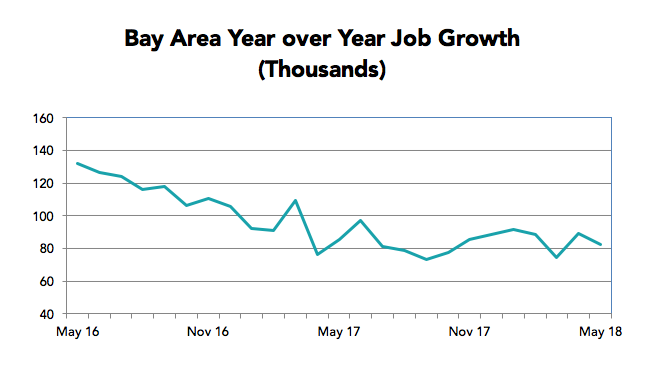
Bay Area job growth continued in May. In May 2018 year over year job growth remained near recent levels with +82,600 (2.1%) and the number of deals for additional office space continued strong. Low unemployment rates and slowing population and labor force growth raise questions as to where the workers will be found to ill the planned expansions in the region.
The Bay Area Again Outpaces the Nation in Job Growth
The Bay Area posted a 2.1% job growth rate during the past 12 months just above the state average and far above the 1.6% U.S. gain.
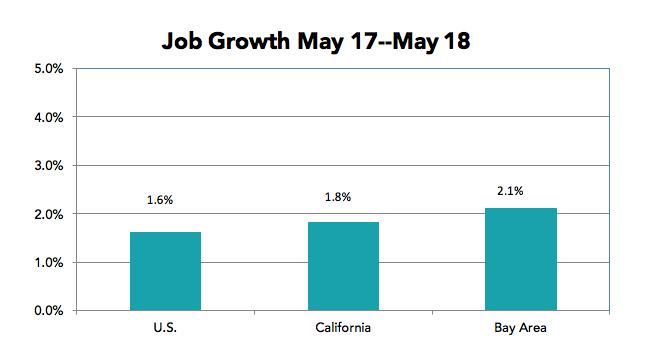
Job growth during the past year was led by the San Jose metro area with gains in the Oakland, San Francisco Santa Rosa and Vallejo metro areas. The San Jose metro area added 3,500 in May for a year over year gain to 3.1%.
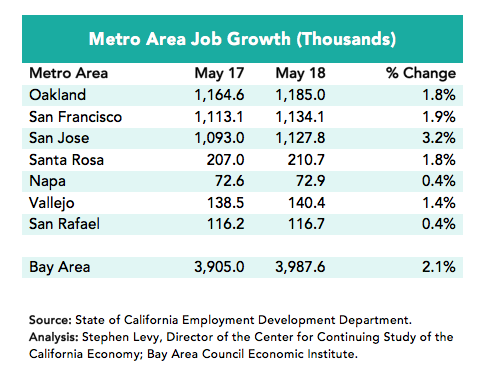
May 2018 continued the strong decline in Bay Area unemployment rates. The region wide unemployment rate fell to 2.4% compared to 4.2% in the state and 3.8% in the nation. The number of unemployed residents fell by 29,600 between May 2017 and 2018. These low unemployment rates combined with high housing costs pose challenges to firms trying to expand their workforce. Labor force growth slowed to a trickle (0.3%) during the past year.
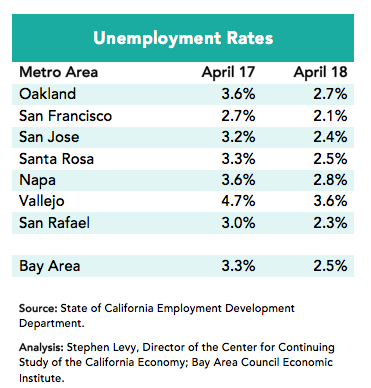
Housing permit levels continued the surge that began in 2017 with permit levels rising 34% in the first four months of 2018 led by strong gains in Alameda, Contra Costa, Napa and Sonoma counties. And project approvals are also rising throughout much of the region.
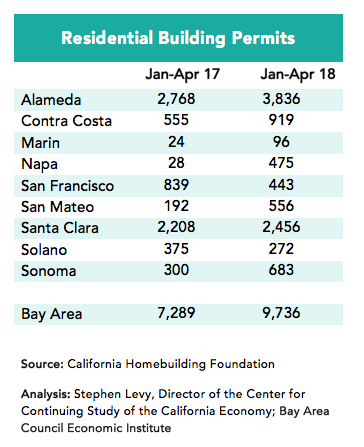
New population estimates for January 1, 2018 were released in May and show a gradual slowing in the number of new residents in the region.
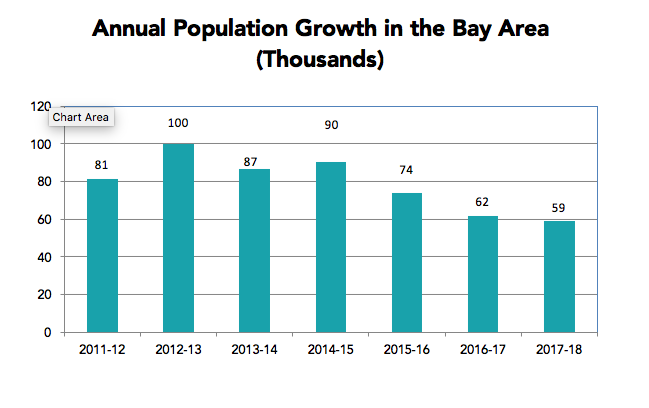
Yet companies are planning major expansions in the region. These expansion plans come at a time when the region is struggling to deal with the challenges of housing shortages and lack of affordability and increasing traffic delay.
For the company expansion plans to become real (at least for most or all of them) will require housing for more workers on top of building for the existing shortages and increased mobility options to get workers to their jobs.
While permit levels are now keeping pace with current population growth, this housing upturn does not come close to addressing the large shortage built up much less fully keep pace with current growth. And not all permits eventually get built.
The next needed steps involve lowering the cost of building new housing, changing zoning to allow more and less expensive housing to be built and, hopefully, state funding to offset some costs of housing so that cities get the funds but some of the fees and infrastructure costs do not have to be added to the cost and price/rental rate of the new housing. The Committee to House the Bay Area (CASA) is working on these issues and the Bay Area Council has participants in this important effort.
But the overall housing shortage is not evenly distributes among price and rent categories. Very low income households are those making between 0% and 50% if area median income (AMI). Low income ranges from 50% to 80% of AMI and moderate (middle income) ranges from 80% to 120% of AMI. With funding and approval challenges, it is not surprising that the low and very low income targets are not being met. But the shortage for middle income households is virtually the same as that for low and very low income households.
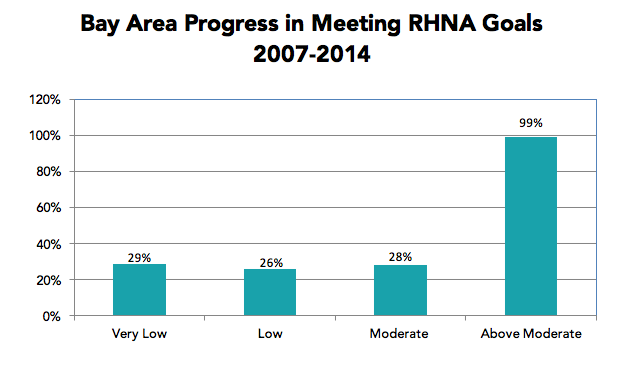
Perhaps the hardest challenge to overcome is the lack of affordable housing for middle income residents who are not eligible for subsidized housing even if it were available in sufficient quantity.
CASA is taking a close look at the missing middle including ideas like adding a new RHNA category for 120%-150% or 180% of area median income and a variety of ways to reduce the cost including modular construction, reducing parking requirements and fees and making it easier to build ADUs.
And the California Housing Finance Agency is raising the income level for moderate income housing support. https://calmatters.org/articles/author/matt-levin/.
The bottom line, which should be understandable to Bay Area Council members, is that it is really hard if not impossible under current rules to build housing that is affordable to middle income residents yet pencils out for developers.
It is great to end on a positive note. Congratulations to the BAC and all the partners for pushing RM3 over the line to address some of our transportation challenges.